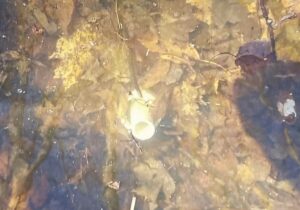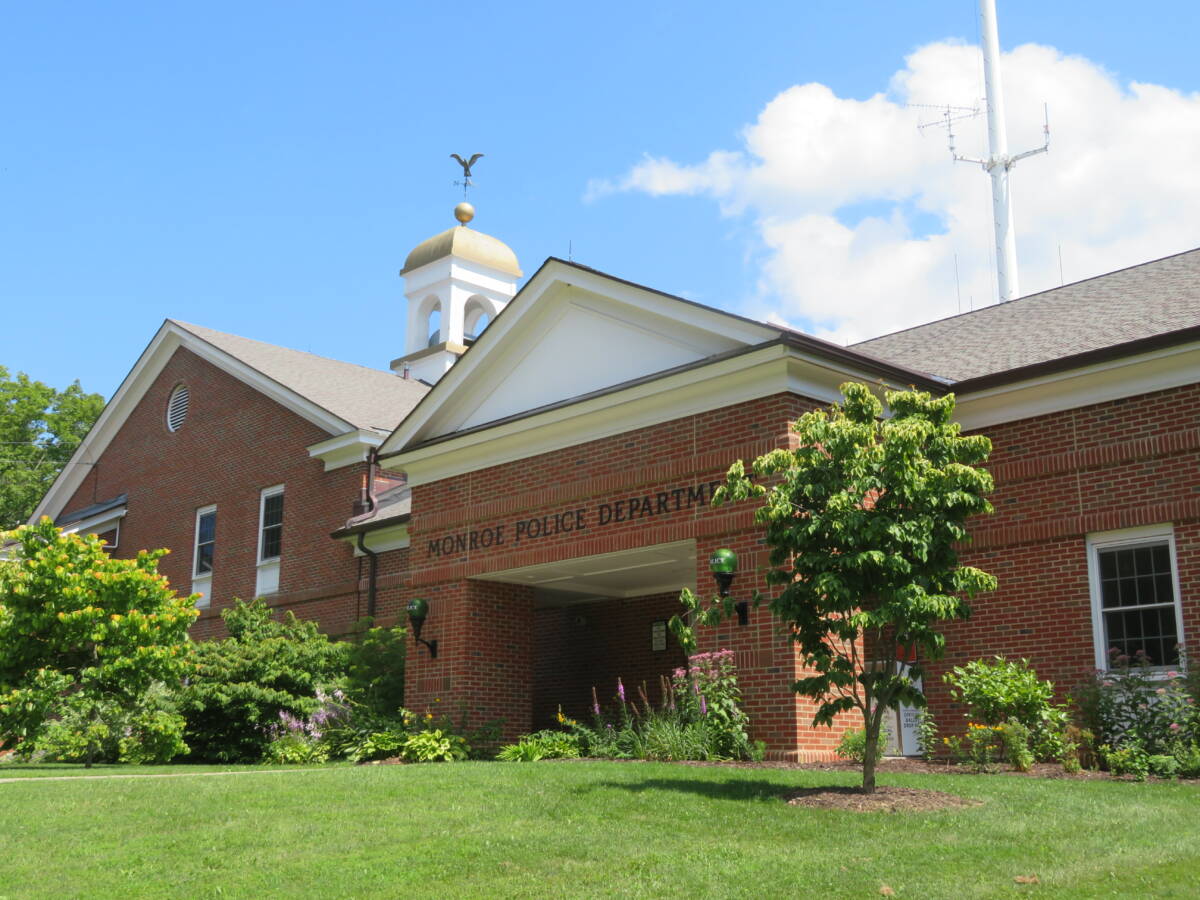MONROE, CT — An update on the wetlands restoration and filling operation on industrial property at 64 Cambridge and 4 Independence drives showed significant progress, with a rehydration of wetlands that had dried up from a quarrying operation, along with a higher groundwater elevation where the mining had left a massive hole.
The application approvals from the Planning and Zoning and Inland Wetlands commissions allowing the restoration and filling work on the site are currently being challenged in court by an abutting property owner, but the site work has continued.
Bill Heiple, a professional engineer and licensed environmental professional with EnSafe, the consultant hired by the town as a third party monitor of the operation, presented his report to the Inland Wetlands Commission Wednesday night.
The properties, which are a combined 72 acres, have two wetlands to the northeast that run north to south and parallel each other. The one to the east was not impacted by the quarrying operation, but the one to the west had been destroyed.

“The bottom line is we’re seeing great success with restoring the wetlands,” Heiple told commissioners. “The water conditions in the impacted area are almost identical to the non-impacted wetlands, so it’s great to see this. It’s a success at this point.”
The mining operation had cut off water that naturally drained into wetlands to the west. The restoration plan entails pumping water into the wetlands, while filling the hole and raising the grade of the property, so stormwater runoff goes downhill to the wetlands.
Chris Pawlowski, a licensed professional engineer with Solli Engineering, also spoke to the commission, along with Arnold Karp, managing partner of the two LLCs that own the properties (Spacely Land Holdings and Astro Land Holdings), and his soil and wetlands scientist William “Bill” Kenny, principal of William Kenny Associates.
“I would say that we’re a little bit ahead of schedule … Sooner than later we’ll be ready to market the site.” — Arnold Karp
Heiple said the groundwater elevation was raised to 411 feet with native materials by late September, and the quarry pit was filled to 423 feet with material from a mixed debris pile on the property by late January of this year.
Material on the property required crushing and sorting due to a large volume of concrete, brick and stone and metals were sorted and removed for offsite recycling, Heiple said, adding about 58,000 cubic yards of a mixed debris pile was placed as fill in the former quarry pit and access road.
EnSafe observed that the material was consistent with fill approved by the town, the report said.
Signs of life
The wetlands were irrigated from a site well from June through October, resulting in moist conditions through the summer of 2022. The wetlands were intermittently irrigated from a quarry area drainage basin from November to February. Significant hydration and flooding was provided from late February into March at Kenny’s recommendation, according to the report.
Kenny said the wetlands to the west has trees shrubs and ground cover, but the water was missing after being cutoff by the quarrying activity. Though the restoration plan saturated the soil with moisture, Kenny said it is a vernal pool wetland, so they also wanted ponded water. He also noted there is a vernal pool wetland to the east.
“We can compare water levels of the un-impacted and impacted wetlands,” he said, adding both now have similar levels of water. “We had soil conditions, but not ponding, so I suggested pumping more water in the system and this is the result you are looking at,” Kenny said, while showing commissioners a photo of the vernal pool.
While pumping water from a well and the quarry pit is a short term hydration plan, Kenny said the filling operation will create a more natural, long term pattern of rainwater running downhill to the wetlands.
Both Heiple and Kenny said the restored wetlands to the west are starting to show signs of life as evidenced by peepers’ eggs. Over time, Kenny said younger peepers from the vernal pool to the east will look for new habitat, helping with the re-populating of the vernal pool to the west.
“The bottom line is we’re seeing great success with restoring the wetlands,” Kenny said. “The water conditions in the impacted area are almost identical to the non-impacted wetlands, so it’s great to see this. It’s a success at this point.”

He said they will continue to compare the two vernal pools as a way of measuring how the restored one to the west is coming along. Heiple said a piezometer is being used to measure water levels and ensure the wetlands’ sustainability continues.
Kenny said the restored vernal pool has a natural surface outlet, so excess water drains from the wetlands area. “If it didn’t have that, you could over-inundate the wetland like a beaver dam,” he said. “He said the release valve prevents it from being over-hydrated.”
BJ Hall, the commission secretary, asked if the pump for the well will be put back to use in the summer.
“Yes … we will continue to pump from the well for the rest of the seasons,” Karp said.
Vice Chairman Erik Lindstrom asked how the restoration plan is tracking “time-wise” based upon what the property owners expected.
“From a site standpoint, we’re out there once a week, if not more, and I would say they’re on or ahead of schedule,” Pawlowski said. “They filled the quarry floor about 50 feet in about eight, nine months max.”
“I would say that we’re a little bit ahead of schedule,” Karp said. “The large pond that was at the end has been filled in, compacted, tested. The large pile has been gone through. The only thing that we have is we have some additional piles of fill, all natural to the site, that we’re waiting to spread. Sooner than later we’ll be ready to market the site, but it has vastly improved from even when you guys had seen it last fall.”
All respectful comments with the commenter’s first and last name are welcome.






